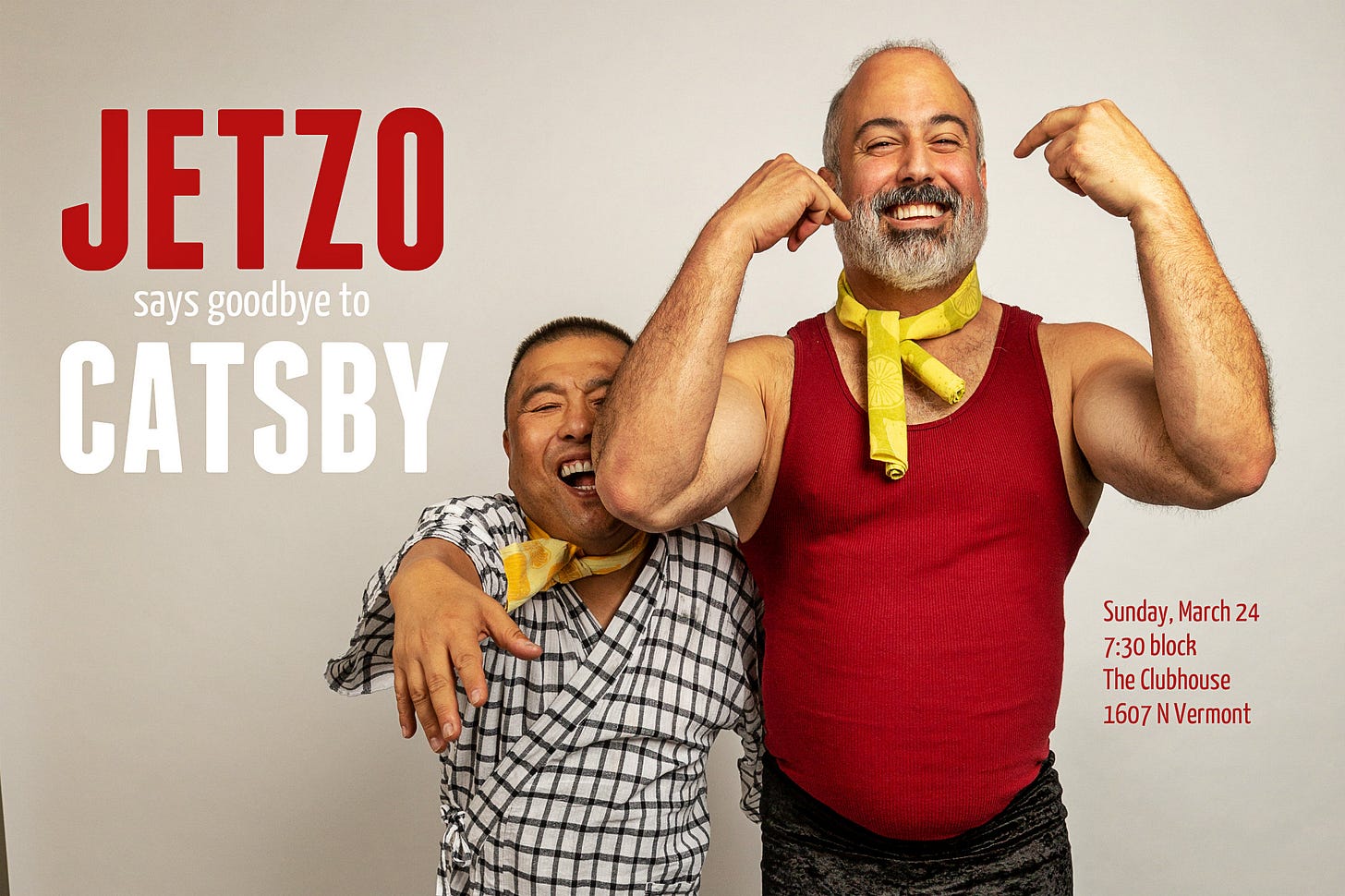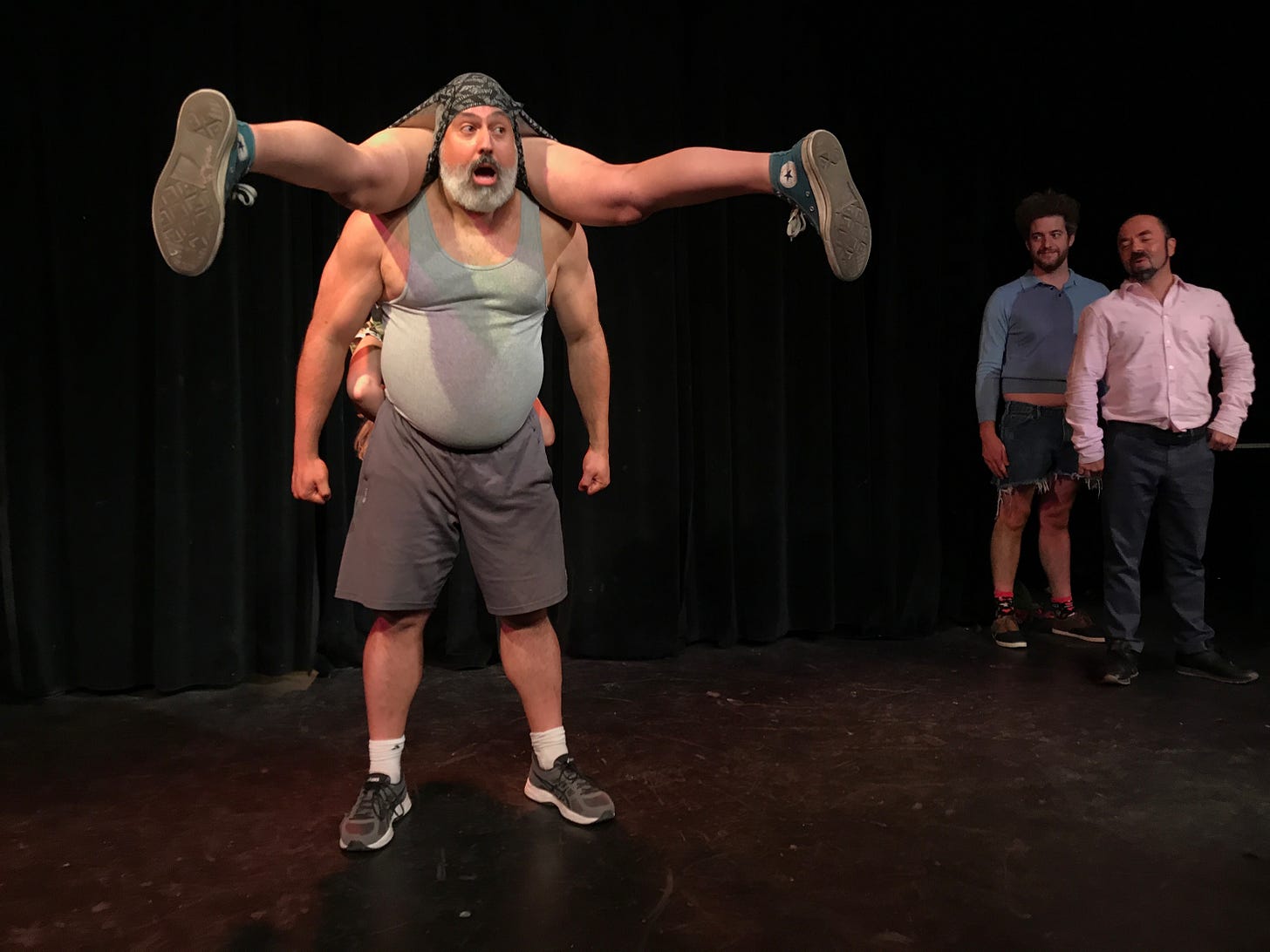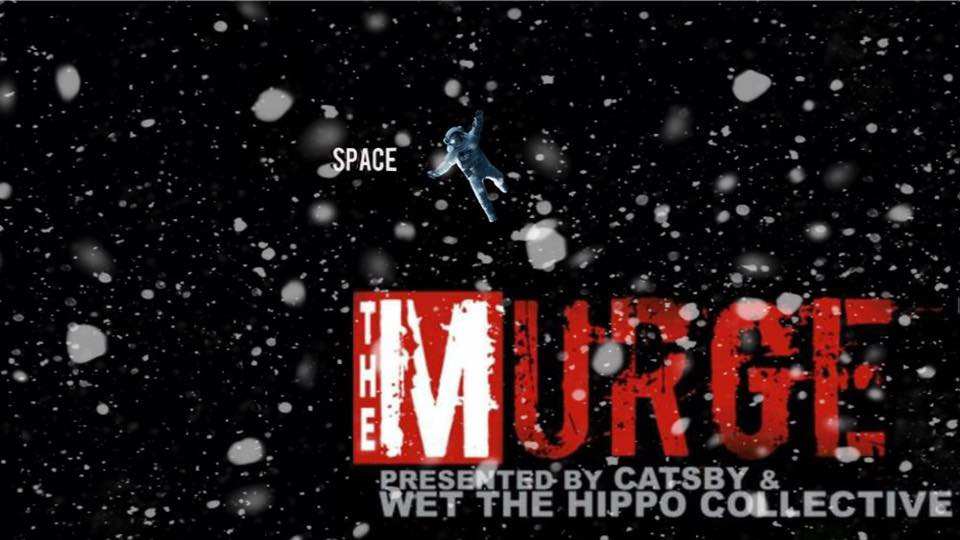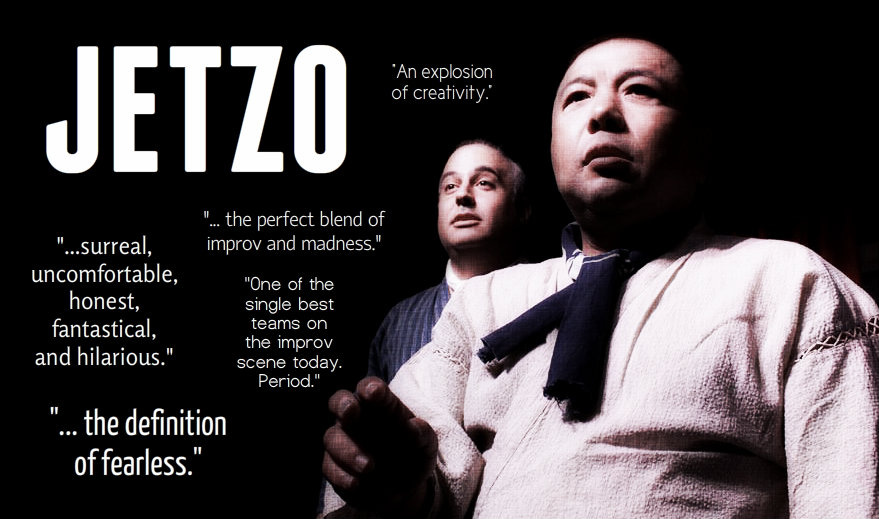A Clown Writes About Connection (Part One)
How can you directly play with an audience if you're improvising?
Hey, clowns!
First off, thanks to all of you who’ve been sharing these posts with friends.
I am continuing to review my old writing as I work on a book for 2024.
My focus is the intersection between clown and improv.
I found some notes about connecting with audiences of different sizes. This is one of the most common things people ask me about. What does it mean to see an audience as a clown? How is it different from a stand-up doing crowd work?
I wrote this eight years ago. Back then, I wasn’t doing much solo work – so these notes were meant for improvising shows with ensembles.
CONNECTING IN SMALL SHOWS
If I’m playing a show for 20 or less people, I try to lock eyes with everyone.
Clowns should always create a sense of intimacy, but there are also pragmatic reasons. When some performers see a small house, they become deflated. They don’t always consider the audience might feel the same way.
No one wants a sea of empty seats.
Start by making eye contact. As soon as you take the stage. You don’t need to make faces or emote opinions. Just be open and let the audience know you’re in this together.
The next step is gauging the response. Who perks up? Who looks away? What information are they sending back? This is true for your entire set. Clown work should feel like a conversation – not a presentation.
Once you’ve surveyed the crowd, make some offers. You might speak to someone, engage them physically – or just give them a look to establish a vibe. It doesn’t need to be funny. That will come later. Start with a repeatable pattern. Create a clear and simple dialogue.
When you initiate games with the crowd, you expand the field of play. This makes the show feel larger despite their being less people. You can also shift the focus in any direction you like. This makes the audience pay attention; they know you might return to them at any moment.
There are numerous ways you can play audience games. You can absorb them into the fiction you’re creating – or use them to step out of scenes and play with the reality of the show. If the audience likes the interaction, lean in harder. If they prefer your scene work, use those games to disrupt the flow and keep them guessing.
Remember, the smaller the crowd, the more care they require. They wanted to be at a packed show– the same as you. Your job is to make the show feel special. If you can’t give an audience the spectacle they hoped for, give them the experience they never expected.
ANALYSIS
I think the principles hold up well. I still practice this approach.
As a piece of writing, this does feel a little prescriptive. Whenever you explain clowning, it loses some electricity. That’s the challenge of this book.
When I wrote these notes, I was part of three ensembles: My improv-clown duo Jetzo, The Murge and Dr. Brown Builds a Show.
I was still doing smaller shows, but not as many.
The first time I mixed clown and improv was in the golden era of the LA indie improv boom. There was a long stretch where only a handful of indie shows ran weekly or monthly. You could wait six months for a slot – or not get up at all. Then, suddenly, there were multiple shows every night. If you hustled, you could play all the time.
The rapid growth didn’t match the demand. The audiences for most indie shows consisted of other teams scheduled to play. This would have been fine, but the excess of opportunity made them feel more like open mics. Teams would book multiple shows, ask to go early, then leave after their sets. This often included talking and wrangling bags as the host introduced the next team. You could feel the life drain from the theater as eight people poured out the door. When Jetzo was popular, we’d often be asked to “headline” – which meant playing for almost no one.
Improv isn’t stand-up. We aren’t testing material for future shows. We are creating unique work never to be repeated. But many improvisers still adopted the worst elements of open mic culture. Even when performers did choose to stay. They’d brazenly scroll their phones or stare into the lights – as they replayed every move of their own disappointing sets.
I found it so frustrating, I wrote a Tumblr blog about it that went viral.
When I started doing clown at stand-up shows, the audiences were better. They were mostly non-performers out to have a good time. They wanted things to work. But if a show was sparsely attended, the booked comics often spoiled the mood.
My favorite improvisers and stand-ups have a lot in common. They are warm, generous, caring and possess a sense of gratitude. It brings them joy to please a crowd. My least favorite improvisers perform for themselves. They are like bratty children putting on a post-Thanksgiving play – holding their families captive as they flail across the living room. My least favorite stand-ups keep score. They count the laughs and lash out at the silence.
All of these bad habits revolve around a lack of connection. Bad improvisers are a lousy audience because audiences aren’t their priority when they perform. Bad stand-ups know crowds matter, but don’t care about their well-being. The people watching are just there to praise their brilliance.
You can break down techniques to help performers connect with an audience, but the real question is why are you doing shows in the first place? Is it just an excuse to play make believe with your friends? Are you a lonely writer looking for validation?
Are you placing your needs over the people who’ve come to watch?
Clowns employ all kinds of techniques. What makes us unique is that – even though we all play differently – we chase the same thing. The love of the audience. We seek connection because that’s the best way to break down their defenses.
It’s a courtship. It doesn’t matter if it’s 10 people or 10,000. Every show, we come face-to-face with our possible soulmate. We have a limited amount of time to convince the audience they feel the same way. So we make the most of every second.
I’d be lying if I told you that all clowns reveal true vulnerability onstage. I’ve worked with some very good performers who were gifted enough to fake it.
But why choose that path?
Maybe because you find the alternative is too daunting. Transforming yourself on a fundamental level. This is why failure is such a cornerstone of our work. It humbles and reveals a clown’s true self. We welcome rejection, so the audience can see that we are willing to suffer for their affection.
That’s what gives them the courage to be foolish alongside us.
(Next week: I’ll be writing about playing for larger crowds and also some differences when connecting with devised work.)
OTHER CLOWN BUSINESS!
LISTEN TO STAND UP AND CLOWN (THE PODCAST) I just posted a great interview with Playspace creators Rachel Ho and Paul Schlesinger. There’s a great archive of old interviews with people who use clown elements in their work – along with solo pods where I discuss my philosophies surrounding the work.
APPLE PODCASTS: shorturl.at/DFKR5
SPOTIFY: shorturl.at/HPQ18
STAND UP AND CLOWN (THE SHOW) takes place last Mondays at 930pm at The Elysian Theater. The next show is our big Halloween special on 10/30! As of publication, Cameron Esposito, Brooks Wheeler, Jon Daly, Brandon Rogers (Brandon Bored) and Danielle Perez will be running a clown gauntlet under my ruthless direction.
10/30: https://tinyurl.com/ydppu6td
You can also see Chad directing this week at BORN FROM NOTHING – a three-day incubator to create a fully-devised clown mask show. Come every night and how the clown sausage is made for this first-ever event.
USE THE CODE “ZOO” FOR DISCOUNTS ON 10/19 and 10/20
10/19: https://www.elysiantheater.com/shows/clownzoo101923
10/20: https://www.elysiantheater.com/shows/clownzoo102023
10/21: https://www.elysiantheater.com/shows/clownzoo102123
ALSO CHECK OUT MY LINKTREE: https://linktr.ee/chad.damiani
AND FOLLOW ME @THECHADDAMIANI ON IG!





